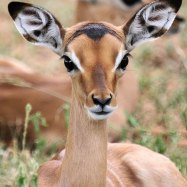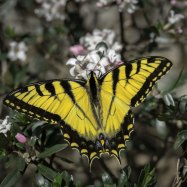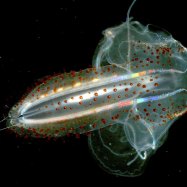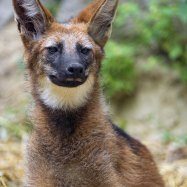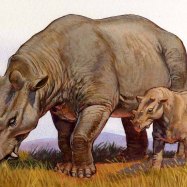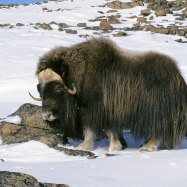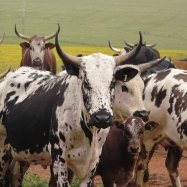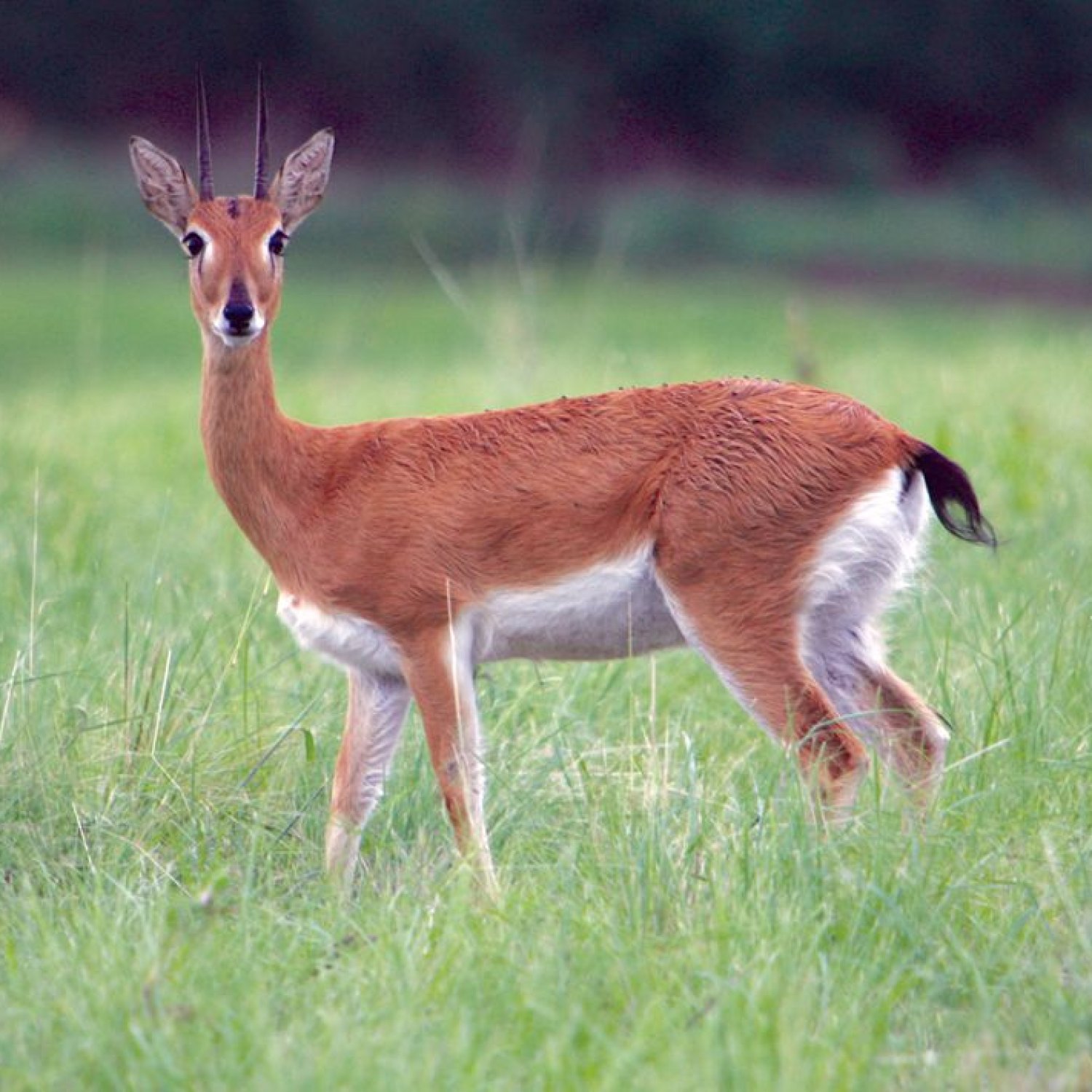
Oribi
90-100 cm
The Oribi, found in Africa, is a member of the Bovidae family and is known for its small and slender body shape. These graceful animals can reach a length of 90-100 cm. Their long legs enable them to run at high speeds, making them a sight to behold in their natural habitat. #Oribi #Africa #Bovidae #Wildlife #AnimalFacts #Nature
Animal Details Summary:
Common Name: Oribi
Kingdom: Animalia
Habitat: Open savannahs and grasslands
The Graceful Oribi: A Small but Remarkable Antelope of the African Savannas
As the warm African sun rises above the horizon, the vast savanna comes to life with the sights and sounds of its diverse inhabitants. Among them is a small and unassuming antelope, known for its grace and agility – the Oribi (Ourebia ourebi).With a scientific name derived from the Greek word for "beautiful antelope," the Oribi truly lives up to its name. This elegant creature can be found in numerous sub-Saharan African countries, residing in open savannahs and grasslands Oribi. But despite its widespread distribution, the Oribi still remains relatively unknown to many.
In this article, we will delve into the world of the Oribi, exploring its unique characteristics, behavior, and role in its ecosystem.
Appearance and Physical Characteristics
Standing at around 90-100 cm in length and weighing between 10-20 kg, the Oribi is one of the smallest antelopes in Africa. It has a small and slender body shape, with long, slender legs perfectly adapted for running and leaping through the tall grasses of its habitat.The most distinctive feature of the Oribi is its light brown coat, which seamlessly blends in with its surroundings. Its belly is white, and it has a white patch on its muzzle, surrounded by dark facial markings. The males also have short, straight horns that are around 10 cm in length.
Habitat and Distribution
As mentioned earlier, the Oribi is found in various sub-Saharan African countries, including Ethiopia, Chad, Senegal, and Tanzania. Its preferred habitat includes open savannahs and grasslands, with a mix of shrubs and tall grasses Ox.Unlike other antelopes, the Oribi does not migrate vast distances, but rather, it maintains a relatively small home range of around 1-3 square kilometers. Within this range, it will establish territories and defend them from intruders.
Behavior and Feeding Habits
Despite its small size, the Oribi is a highly adaptable creature. It is mainly active during the day, and during the hottest parts of the day, it rests in shaded areas to avoid the scorching sun. It is a solitary animal, only coming together during mating season.Being herbivores, Oribis feed on a variety of plant matter, including grasses, shoots, leaves, and fruits. They use their slender legs and flexible bodies to navigate through the tall grasses, allowing them to reach food sources that other antelopes cannot.
Role in the Ecosystem
The Oribi may be small, but it plays a crucial role in its ecosystem. As grazers, they help control the vegetation growth, which, in turn, maintains a balance in the food chain. They are also a vital food source for predators, such as lions, leopards, and hyenas, making them integral to the functioning of the African savanna.Moreover, Oribis are also known to dig shallow depressions in the ground called "scrapes," which collect rainwater and provide drinking water for other animals during the dry season.
Conservation Status
Despite its importance in the ecosystem, the Oribi faces threats from habitat loss due to human activities, including agriculture, grazing, and infrastructure development. They are also hunted for their meat and skins, and their horns are used in traditional medicine.The International Union for Conservation of Nature (IUCN) has listed the Oribi as "Least Concern" on their Red List of Threatened Species. However, monitoring and conservation efforts are still crucial in ensuring the continued survival of this beautiful species.
Fun Facts about the Oribi
- The Oribi is famously known for its incredible leaping ability, which can reach up to 1.8 meters in height and 6 meters in length.- Unlike other antelopes, the Oribi's young are born fully developed and can stand and run within hours of birth.
- Oribis communicate through a series of vocalizations, including bleats, grunts, and snorts.
- These graceful creatures are also skilled swimmers and can easily cross streams and rivers.
In Conclusion
The Oribi may not be as well-known as other African animals, but it is undoubtedly a fascinating and essential species in its ecosystem. With its elegant appearance, unique characteristics, and critical role in its habitat, it is a testament to the beauty and diversity of nature.But as with many other species, the Oribi faces threats that need to be addressed to ensure its continued existence. Through education, conservation efforts, and responsible tourism, we can help protect and preserve the Oribi and the vast savannas it calls home. Let us all do our part in securing a future for this graceful and remarkable antelope.

Oribi
Animal Details Oribi - Scientific Name: Ourebia ourebi
- Category: Animals O
- Scientific Name: Ourebia ourebi
- Common Name: Oribi
- Kingdom: Animalia
- Phylum: Chordata
- Class: Mammalia
- Order: Artiodactyla
- Family: Bovidae
- Habitat: Open savannahs and grasslands
- Feeding Method: Herbivorous
- Geographical Distribution: Sub-Saharan Africa
- Country of Origin: Multiple African countries
- Location: Africa
- Animal Coloration: Light brown with a white belly
- Body Shape: Small and slender
- Length: 90-100 cm
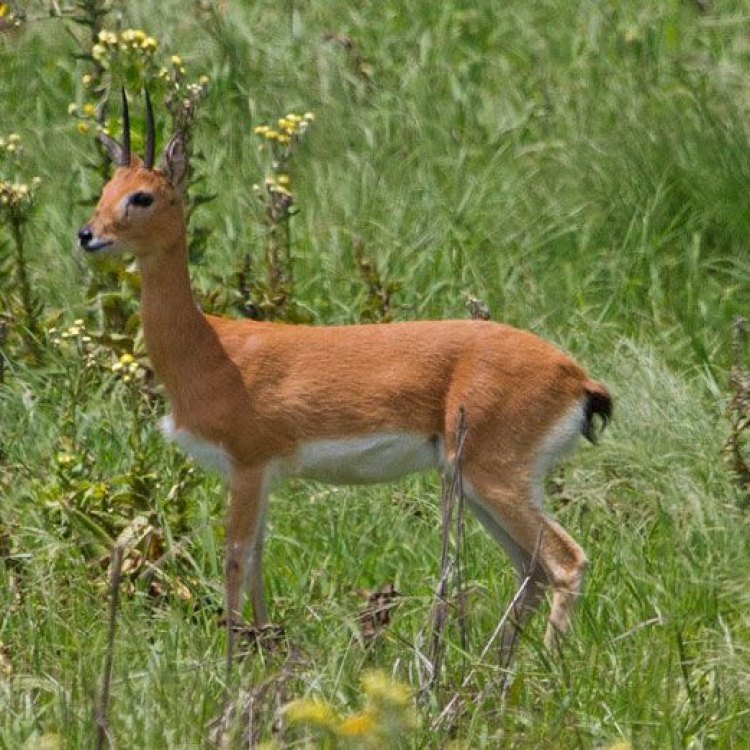
Oribi
- Adult Size: 50-60 cm at the shoulder
- Average Lifespan: 10-12 years
- Reproduction: Sexual
- Reproductive Behavior: Polygynous
- Sound or Call: Whistling and grunting
- Migration Pattern: Non-migratory
- Social Groups: Solitary or small groups
- Behavior: Active during the day, mainly in the early morning and late afternoon
- Threats: Habitat loss and fragmentation, hunting
- Conservation Status: Near Threatened
- Impact on Ecosystem: Important prey species
- Human Use: Hunting for meat and sport
- Distinctive Features: Long, pointed ears and short, sharp horns in males
- Interesting Facts: Oribis have excellent camouflage and can lie still in tall grass to avoid predators
- Predator: Predators include lions, leopards, cheetahs, and hyenas
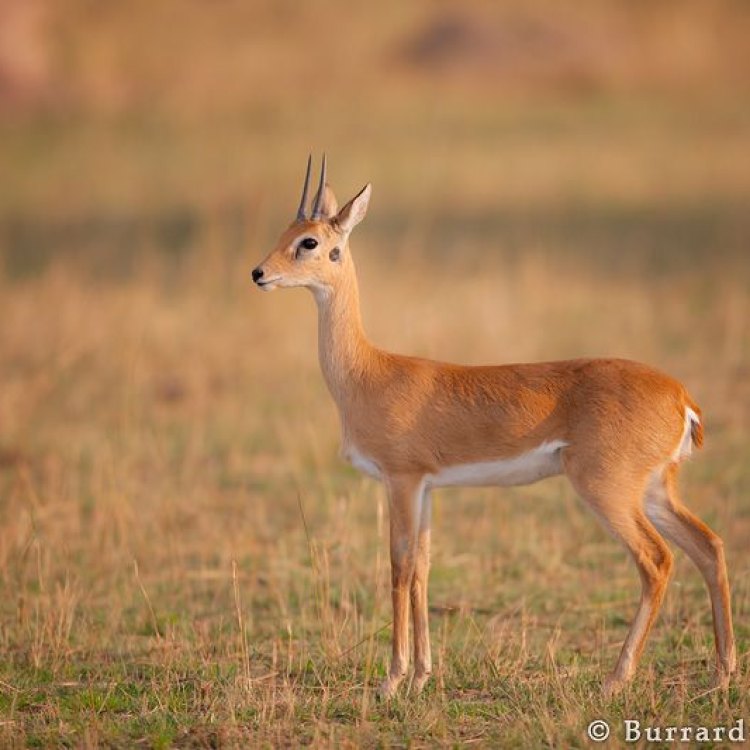
Ourebia ourebi
The Fascinating World of Oribis: Masters of Camouflage and Survival
The African savannah is home to a plethora of wildlife, each with their distinct features and survival strategies. Among these animals, the Oribi stands out with its unique appearance and survival skills. This small antelope, also known as the Ourebi, is a true master of camouflage and is found in the grasslands and shrublands of East and Southern Africa.Standing at an average height of 50-60 cm at the shoulder, the Oribi might seem like an unassuming creature PeaceOfAnimals.Com. Still, it has many distinctive features and behaviors that have caught the attention of wildlife enthusiasts and researchers around the world. From its role in the ecosystem to its human use and conservation status, let's delve deeper into the world of Oribis and discover what makes them truly special.
Size, Lifespan, and Reproduction
The Oribi is a small-to-medium-sized antelope, with males being slightly larger than females. They have a delicate body structure, with slender legs and a long, thin neck. Their coat is a reddish-brown color, with white underparts and a distinctive black patch on their forehead. However, their most distinctive features are their long, pointed ears and short, sharp horns in males.As for their average lifespan, Oribis can live up to 10-12 years in the wild, depending on various factors such as their habitat and predators. Like most antelopes, Oribis are sexually reproducing, with a polygynous breeding behavior. This means that a male Oribi will mate with multiple females during the breeding season, which typically takes place from March to May Orange Roughy.
Social Behavior and Migration Patterns
Oribis can be solitary animals or can form small groups known as "herds." These groups usually consist of a male, a female, and their offspring. They are mostly active during the day, with their peak activity periods being in the early morning and late afternoon when the temperatures are moderate.Unlike other antelopes, Oribis are non-migratory, meaning that they do not undertake seasonal movements across long distances. They prefer to stay in their preferred habitats, which include open grasslands, shrublands, and savannahs. This makes them easy to spot for predators and other animals, which can have both advantages and disadvantages for the Oribi.
Threats and Conservation Status
The Oribi, like many other wildlife species, faces several threats to its survival. Habitat loss and fragmentation due to human activities, such as agriculture and urbanization, are some of the primary threats faced by these animals. Furthermore, Oribis are also hunted for their meat and sport, which has resulted in a decline in their population.According to the International Union for Conservation of Nature (IUCN), Oribis are currently listed as "Near Threatened" on the Red List of Threatened Species. This means that although their population is stable, they are at risk of becoming endangered if conservation efforts are not implemented promptly.
Oribis and the Ecosystem
Despite their small size, Oribis play a crucial role in the ecosystem as an important prey species. Their presence helps maintain a balance in the food chain, as they are a food source for predators such as lions, leopards, cheetahs, and hyenas. Additionally, their grazing patterns also contribute to the health of the grasslands, ensuring the growth of diverse plant species.Impressive Survival Skills
One of the most fascinating aspects of Oribis is their excellent camouflage. They have evolved to blend in perfectly with their surroundings, making them almost invisible to predators. Oribis have a reddish-brown coat that perfectly matches the color of the savannah grass, and they can even lie still in tall grass to avoid being detected. This survival strategy has helped them thrive in their habitat, even though they are not the fastest or strongest animals on the savannah.Human Use
Unfortunately, Oribis are also hunted by humans for their meat and sport. Due to their unique appearance and small size, some tourists and trophy hunters choose to target these animals. This not only poses a threat to their population but can also disrupt the balance of the ecosystem, as Oribis play an essential role in the food chain.Furthermore, the indigenous people in some African countries have also used Oribi parts in traditional medicine. Although this practice is dwindling, it still poses a threat to the survival of these animals.
Conservation Efforts
Thankfully, there are ongoing efforts to conserve Oribis and their habitats. Organizations such as the African Wildlife Foundation and the World Wildlife Fund are working towards protecting the grasslands and savannas where Oribis live. They also collaborate with local communities to promote sustainable land use practices, reducing the threats faced by these animals.Additionally, some countries have set up protected areas, such as national parks and wildlife reserves, where Oribis can live freely without the fear of being hunted. These conservation efforts have helped stabilize the Oribi population in recent years, but continuous efforts and awareness are necessary to ensure their long-term survival.
Conclusion
In conclusion, the Oribi, with its unique features and impressive survival skills, is a true wonder of the African savannah. These small yet mighty antelopes play a vital role in the ecosystem and are also a significant source of inspiration for researchers studying animal behavior and evolution.As responsible citizens, it is our duty to help conserve and protect these animals and their habitats. Whether through supporting conservation organizations or practicing responsible tourism, we can all contribute to ensuring the survival of this beautiful and fascinating species. Let us appreciate the Oribi and all the other incredible creatures that call the African savannah their home.
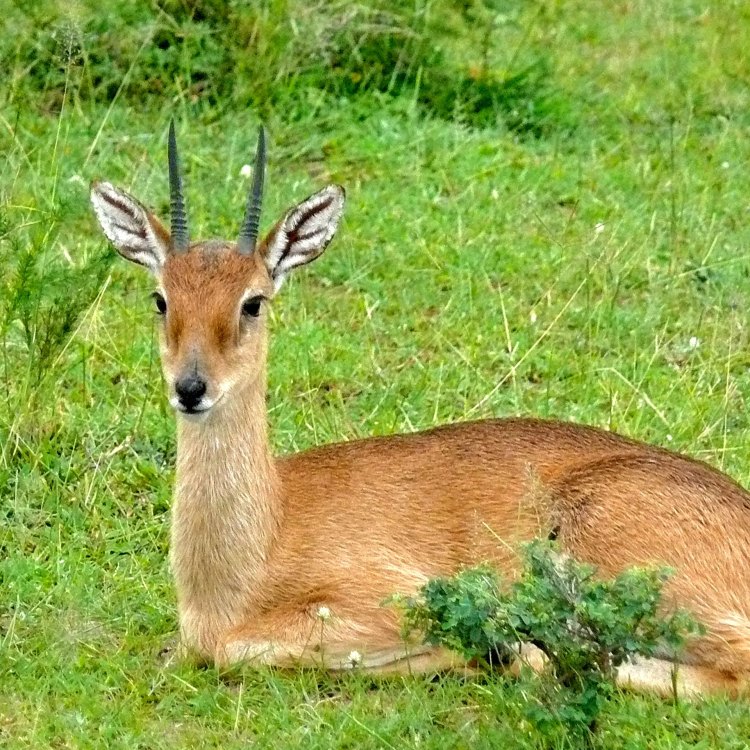
The Graceful Oribi: A Small but Remarkable Antelope of the African Savannas
Disclaimer: The content provided is for informational purposes only. We cannot guarantee the accuracy of the information on this page 100%. All information provided here may change without prior notice.


